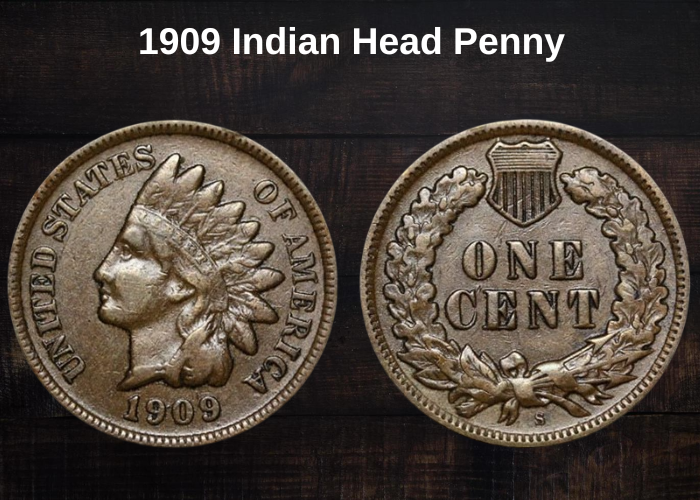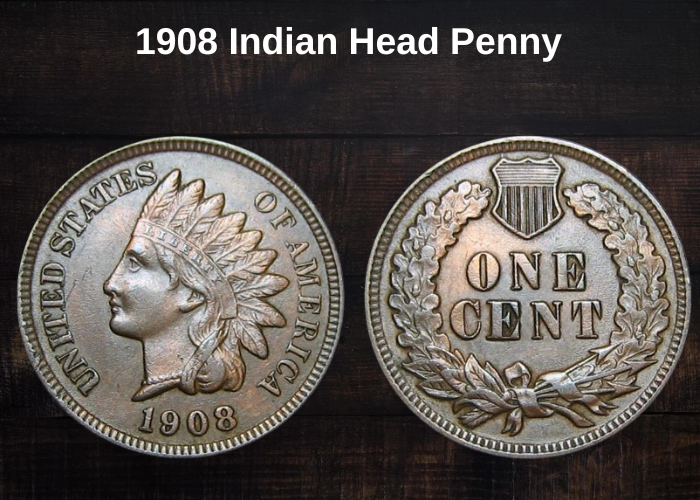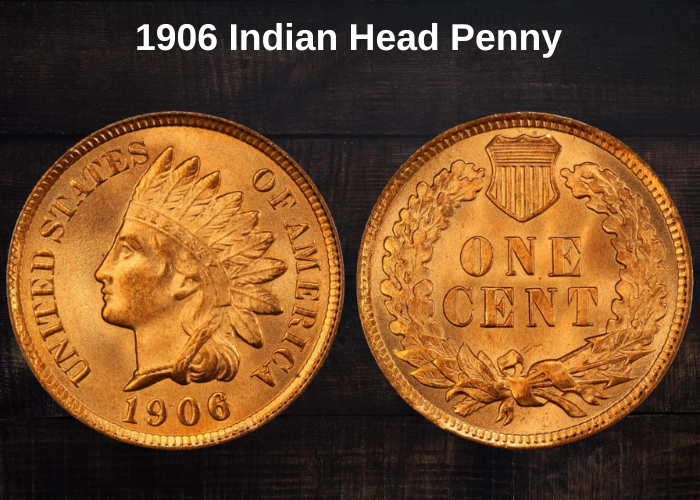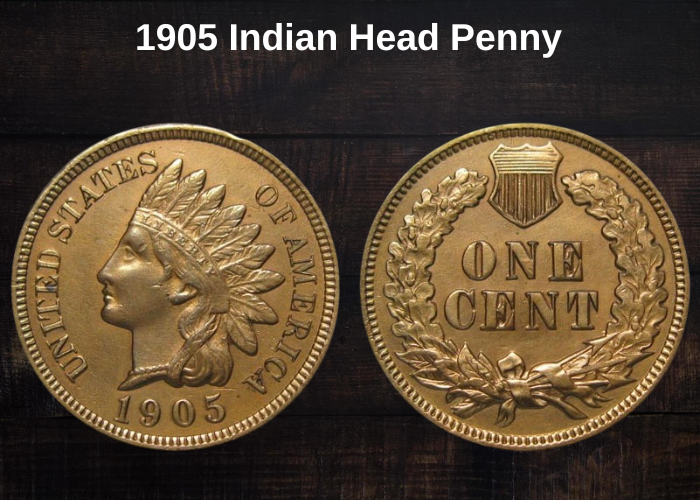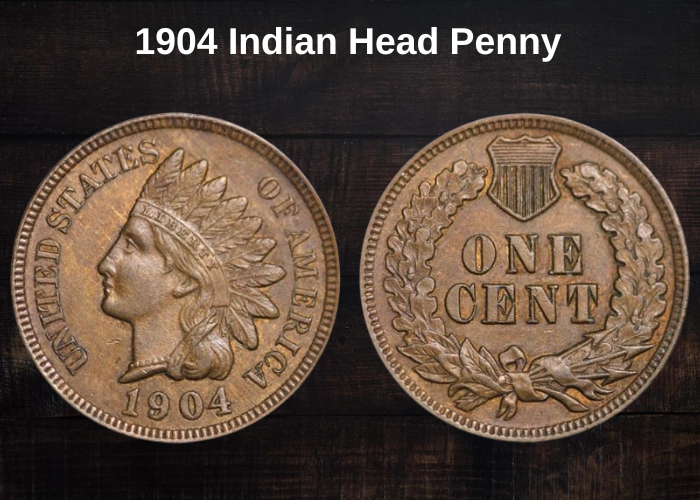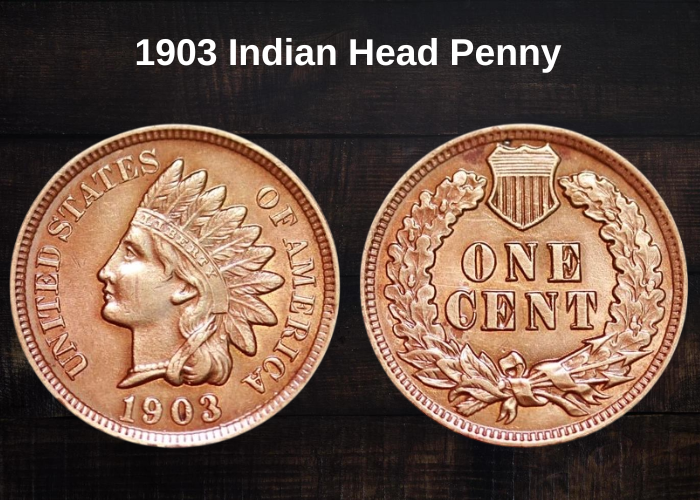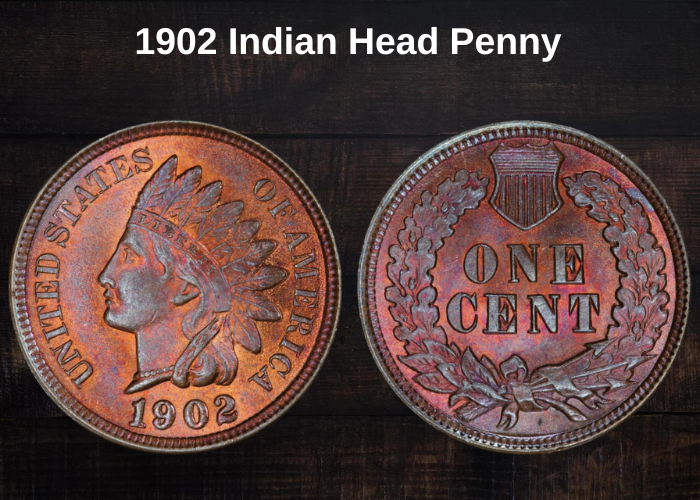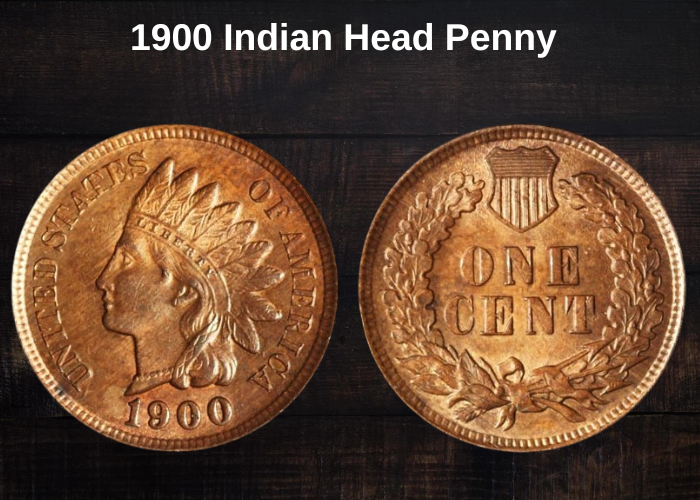Do you own a 1907 Indian Head penny and want to know how much it’s worth? Or perhaps you’re considering adding one to your collection?
The Indian Head penny is the second most popular U.S. cent after the Lincoln penny, and collectors are always on the lookout for well-preserved examples. The year 1907 is especially notable because it was the first time the mintage of Indian Head cents surpassed 100 million.
As with all old coins, the value of a 1907 Indian Head penny depends largely on its condition, rarity, and any notable errors. Below is a value chart to help you determine how much your 1907 penny might be worth.
1907 Indian Head Penny Value Chart
| Mint Mark | Good | Fine | Extremely Fine | Uncirculated |
|---|---|---|---|---|
| 1907 No Mint Mark Indian Head | $2 | $4 | $15 | $400 |
| 1907 Proof Indian Head | – | – | – | $2,200 |
In this guide, we’ll explore the factors affecting the value of a 1907 Indian Head penny, along with errors that could make your coin even more valuable.
History of the 1907 Indian Head Penny

The United States Mint produced the Indian Head cent from 1859 to 1909, and in 1907, production surpassed 100 million for the first time.
Over its 50-year history, the Indian Head penny underwent several modifications, primarily due to fluctuating metal prices.
- 1857: The U.S. Mint changed the cent’s composition from 100% copper to 88% copper and 12% nickel due to rising copper costs. At the same time, the coin’s size was reduced. This new design was called the Flying Eagle cent, the first U.S. coin to use a copper-nickel alloy.
- 1858: The Flying Eagle cent was discontinued because it was difficult to mint, and the Indian Head design was introduced instead. The reverse originally featured a laurel wreath, which was replaced by an oak wreath and shield in 1860.
- 1864: During the Civil War, people hoarded cents, and the nickel supply dwindled, making coin production more expensive. The Mint switched to a bronze alloy composition to keep up with demand.
The Indian Head penny, designed by Chief Engraver James Barton Longacre, remained in circulation from 1859 to 1909. It was an immensely popular coin, leading the U.S. Mint to strike large numbers annually to meet demand.
Features of the 1907 Indian Head Penny
The Obverse of the 1907 Indian Head Penny
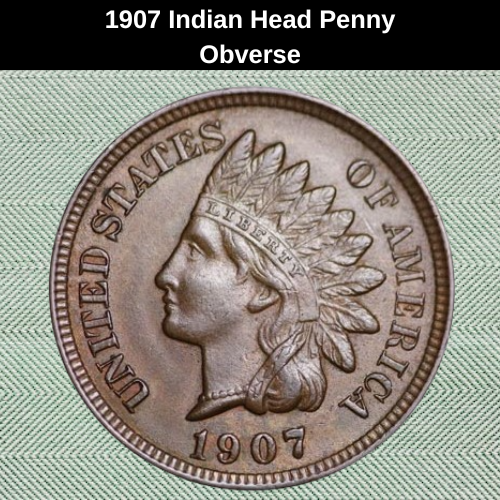
The Indian Head penny gets its name from its obverse design, which showcases Lady Liberty wearing a traditional Native American headdress.
This coin was the first U.S. currency to incorporate elements of Native American culture, making it especially appealing to collectors and historians.
In the design, Liberty faces left, and a headband secures the feathered headdress in place. The word LIBERTY is inscribed on the headband, adding a distinctive detail to the coin’s appearance.
The Reverse of the 1907 Indian Head Penny
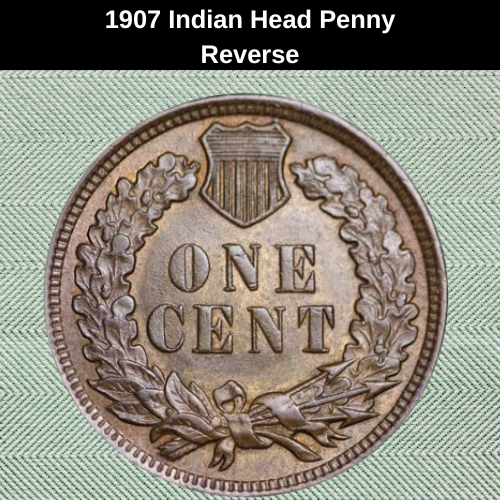
The reverse design of the 1907 Indian Head penny showcases an oak wreath, with arrows elegantly tied at the bottom by a ribbon.
At the top of the coin, a shield symbolizes unity and strength, while the denomination ONE CENT is prominently displayed at the center.
Earlier versions of the Indian Head penny featured a laurel wreath, but due to minting difficulties, it was replaced with the simpler oak wreath in 1860, a design that remained unchanged until the series ended in 1909.
Other Features of the 1907 Indian Head Penny
The 1907 Indian Head cent is a lightweight coin, weighing 3.11 grams with a diameter of 19.00 millimeters.
Its composition consists of 95% copper and 5% tin and zinc. Due to the high copper content, these pennies often develop a brown patina with a greenish hue, while others retain a light red luster.
Brown Indian Head pennies are typically circulated and worn, making them less desirable among collectors. In contrast, red specimens are highly sought after but extremely rare for this date.
1907 Indian Head Penny Grading
Grading Indian Head cents, including those from 1907, involves carefully evaluating wear and surface condition.
Since these pennies were heavily circulated, uncirculated specimens hold the most value.
How to Identify an Uncirculated 1907 Indian Head Penny:
- The coin should have no or minimal wear on its surface.
- Under a single light source, the luster should be intact and radiate in rings.
- On the obverse, examine Liberty’s cheek, under her eye, chin, jawline, and the hair curls—these areas should retain their original texture.
- On the reverse, check the ribbon knot, leaf edges, and the ONE CENT lettering—the texture should remain grainy, and any smoothing indicates wear.
Grading Scale for 1907 Indian Head Cents:
| Grade | Description |
|---|---|
| 1 | Basal State |
| 2 | Fair |
| 3 | Very Fair |
| 4-6 | Good |
| 7-10 | Very Good |
| 12-15 | Fine |
| 20-30 | Very Fine |
| 40 | Extremely Fine |
| 50 | About Uncirculated |
| 60 | Mint State |
| 65 | Mint State |
| 70 | Mint State (Perfect Condition) |
Checking grading guides is essential to determining the exact value of your 1907 Indian Head penny!
1907 Indian Head Penny Value Guides
The value of a 1907 Indian Head penny primarily depends on its condition, as its physical state plays a crucial role in determining its market price due to its age.
This penny is especially desirable among collectors for two main reasons:
- It had the highest mintage of all Indian Head pennies.
- It was minted exclusively at the Philadelphia Mint, with no mint mark.
1907 No Mint Mark Indian Head Penny Value

The Philadelphia Mint struck approximately 108,137,143 Indian Head pennies in 1907, marking the first time production surpassed 100 million for this series.
Because so many coins were released into circulation, 1907 Indian Head pennies are common, especially in lower grades. However, fully red, gem-quality specimens are rare and command high prices at auctions.
Since these pennies were only minted in Philadelphia, they do not have a mint mark.
Estimated Values:
- Circulated (Good to About Uncirculated – AU): $2 to $35
- Mint State (MS60): Up to $52
- Mint State (MS66 Gem Quality): Up to $400
- Most Expensive Brown Specimen (MS66, 2022): $900
- Record Sale (MS67+ Red, 2019 Heritage Auctions): $65,000
1907 Proof Indian Head Penny Value
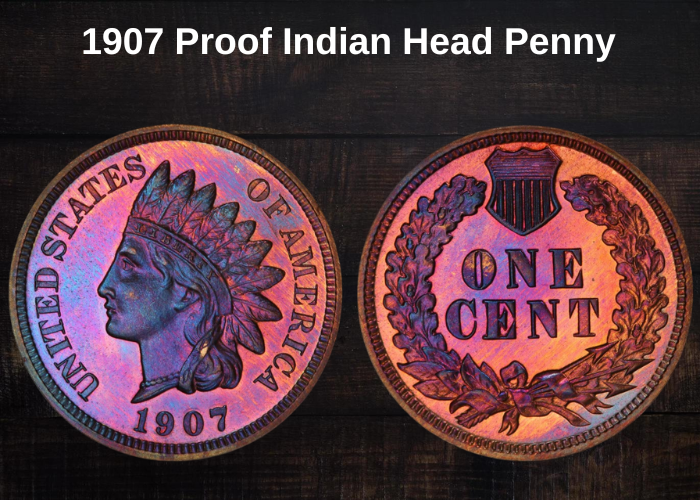
In addition to regular Indian Head pennies, the Philadelphia Mint also struck proof coins for collectors. The 1907 proof Indian Head penny has the lowest mintage in the series, with only about 1,475 coins struck.
Although many of these coins were saved, the population of higher-grade proofs is limited. For example:
- Proof 63 to Proof 65 (PF63-PF65): These are relatively common and will be easy to find with red-brown surfaces and a brilliant luster.
- Proof 66 (PF66): Fewer than 100 examples known.
- Proof 67 (PF67): Fewer than 12 examples known.
Estimated Values:
- PF60 (brown): At least $125
- PF67 (brown): Can fetch as much as $3,150 (One example sold for $5,518 at a 2013 Heritage Auctions sale)
- PF62 (fully red, cameo or deep-cameo): About $275
- PF67 (fully red, cameo or deep-cameo): Up to $23,000
Note: Fully red gem-quality proof coins with cameo or deep-cameo finishes are extremely rare and highly desirable among collectors.
Rare 1907 Indian Head Penny Errors List
Despite the high mintage, Indian Head pennies, including those minted in 1907, are often found to be well-struck. While the series doesn’t feature many errors, some rare ones are worth significant amounts. Collectors often value these error coins highly. Here are some 1907 Indian Head penny errors to keep an eye out for:
1907 Die Cud Indian Head Error
A die cud error occurs when part of the die breaks off, creating a small raised area or bump on the coin’s surface. This happens when there is a vertical and horizontal displacement in the die, which then gets imprinted on the planchet (the metal disk that is struck to make the coin) during the striking process.
Die cuds are often visible to the naked eye, making them especially desirable to collectors. The error appears on both the obverse and reverse of the coin, and it can add unique character to an otherwise common coin.
For a 1907 Indian Head penny, a die cud error typically increases the coin’s value. Coins with this error are often worth around $100, depending on the size and visibility of the cud. The more pronounced and easily visible the cud is, the more valuable the coin can become.
So, if you come across a 1907 Indian Head penny with a die cud, it might be worth more than a regular specimen from the same year.
1907 Misplaced Date Indian Head Error
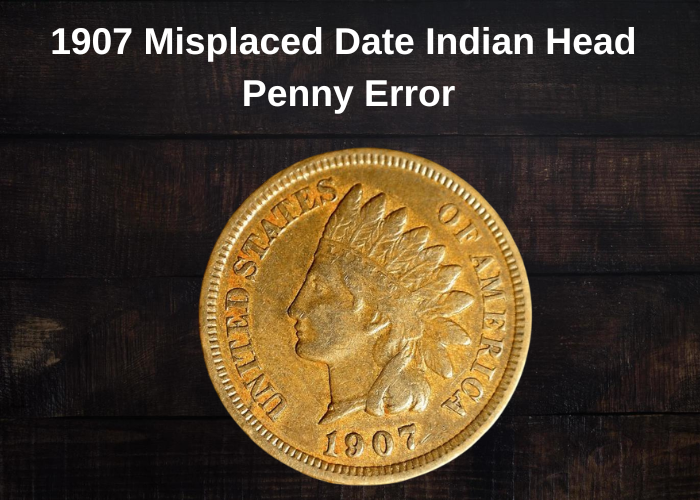
A misplaced date error occurs when the date is not struck in its correct position on the coin. This can happen when the die used to strike the coin is misaligned during the minting process.
For the 1907 Indian Head penny, the date should appear at the bottom of the rim, just beneath Liberty’s neck. However, in misplaced date errors, the date will be slightly off and can appear shifted to the right or in another abnormal position.
This error is quite appealing to collectors who are seeking unique specimens to add to their collections. Misplaced date errors are considered relatively common among Indian Head pennies but are still valuable, especially in mint state. A 1907 misplaced date Indian Head penny can fetch anywhere from $100 to $250 or more, depending on its condition and the prominence of the error.
1907 Doubled Die Indian Head Error
Doubled die errors occur when a coin’s design is struck multiple times at slightly different angles, causing a noticeable doubling effect on the coin’s features. These errors are fairly common and can be found on a variety of coins, including the 1907 Indian Head penny.
For the 1907 Indian Head penny, the doubling is most evident on the reverse of the coin, particularly on the oak leaves in the wreath. There is also some noticeable doubling on the obverse, particularly on the words “UNITED STATES OF AMERICA” and the date.
Collectors value these doubled die errors highly, and a 1907 Indian Head penny with this error can be worth $150 or more, depending on its condition and the extent of the doubling. These coins can be a valuable addition to a collection, especially in mint state or higher grades.
So, if you’re lucky enough to find one of these doubled die errors, it could be quite a profitable find!
FAQ: 1907 Indian Head Penny
What makes a 1907 Indian Head penny valuable?
The value of a 1907 Indian Head penny is primarily determined by its condition. A penny with minimal wear, a shiny luster, and clear, visible details on both the obverse (front) and reverse (back) is more valuable. Coins in mint state with all features intact will fetch a premium.
Is a 1907 Indian Head penny rare?
While the 1907 Indian Head penny has the highest mintage in the series (over 100 million coins), making it relatively common in all grades, gem-quality specimens are rare. Only a small number of high-grade or perfectly preserved 1907 Indian Head pennies survive, making those examples highly desirable among collectors.
Where is the mint mark on a 1907 Indian Head penny?
The 1907 Indian Head penny was only struck at the Philadelphia Mint, and Philadelphia-minted coins traditionally do not have a mint mark. So, you won’t find a mint mark on these pennies.

